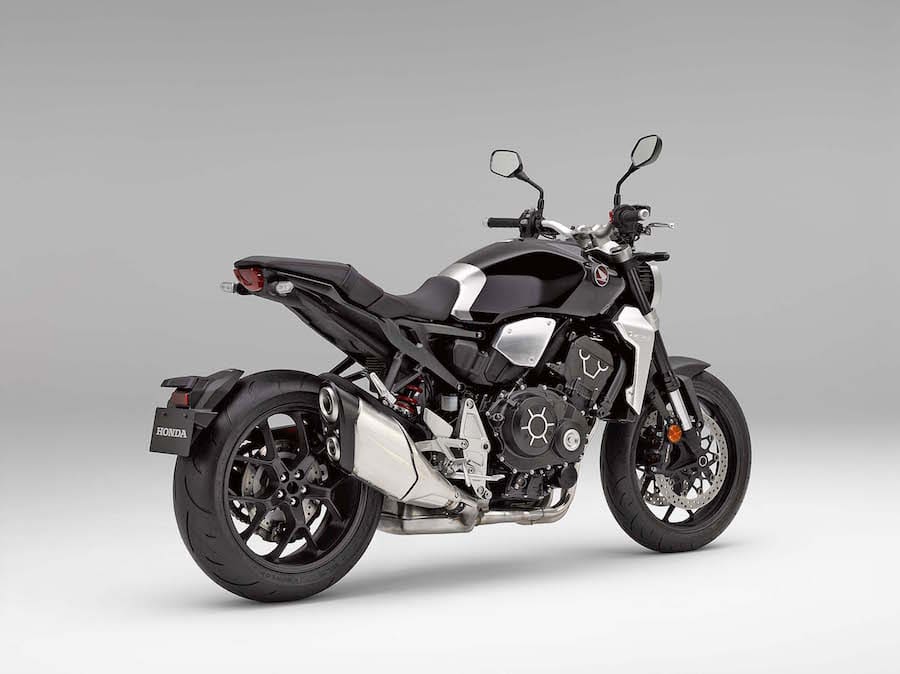Honda’s conservative approach in recent years means its range sometimes seems a little soulless, but the company will be hoping the new CB1000R – and its matching CB300R sibling – will help redress that.
There’s no question that in terms of style they’re a hit. Taking their cues from the CB4 Concept from 2015, both the CB1000R and CB300R (and a CB125R/CB150R single offered in other markets) adopt a neo-retro look that manages to be up-to-the-minute while giving a nod to the past.
The CB1000R was previewed as the Neo Sports Café concept just weeks ago at the Tokyo Motor Show. And unsurprisingly the production model is virtually identical.
The engine is derived from the old CB1000R, itself a detuned 2004-spec Fireblade cast-off. But there’s a 16 per cent power hike to 107kW at 10,500rpm. That lags a bit behind the likes of BMW’s S1000R, Yamaha’s MT-10 and KTM’s 1290 Super Duke R, but realistically it’s more than most of us need on the road.
It’s also 12kg lighter than before at 212kg, thanks largely to a new part-steel, part-aluminium chassis.
Showa supplies the
SFF-BP forks, Tokico the radial brake calipers, and there’s a full suite of modern electronics – traction control, riding modes, engine brake control and ABS.
A quickshifter is optional, or standard on the higher-spec CB1000R+ derivative, which also gets a fly-screen, pillion cowl and heated grips.
The CB300R has similar styling and uses a steel chassis first seen on the Asian-market CB150R. It has a 23.1kW 286cc single from the existing CB300F and CBR300R, but weight is an impressively low 143kg wet, promising sprightly performance.












